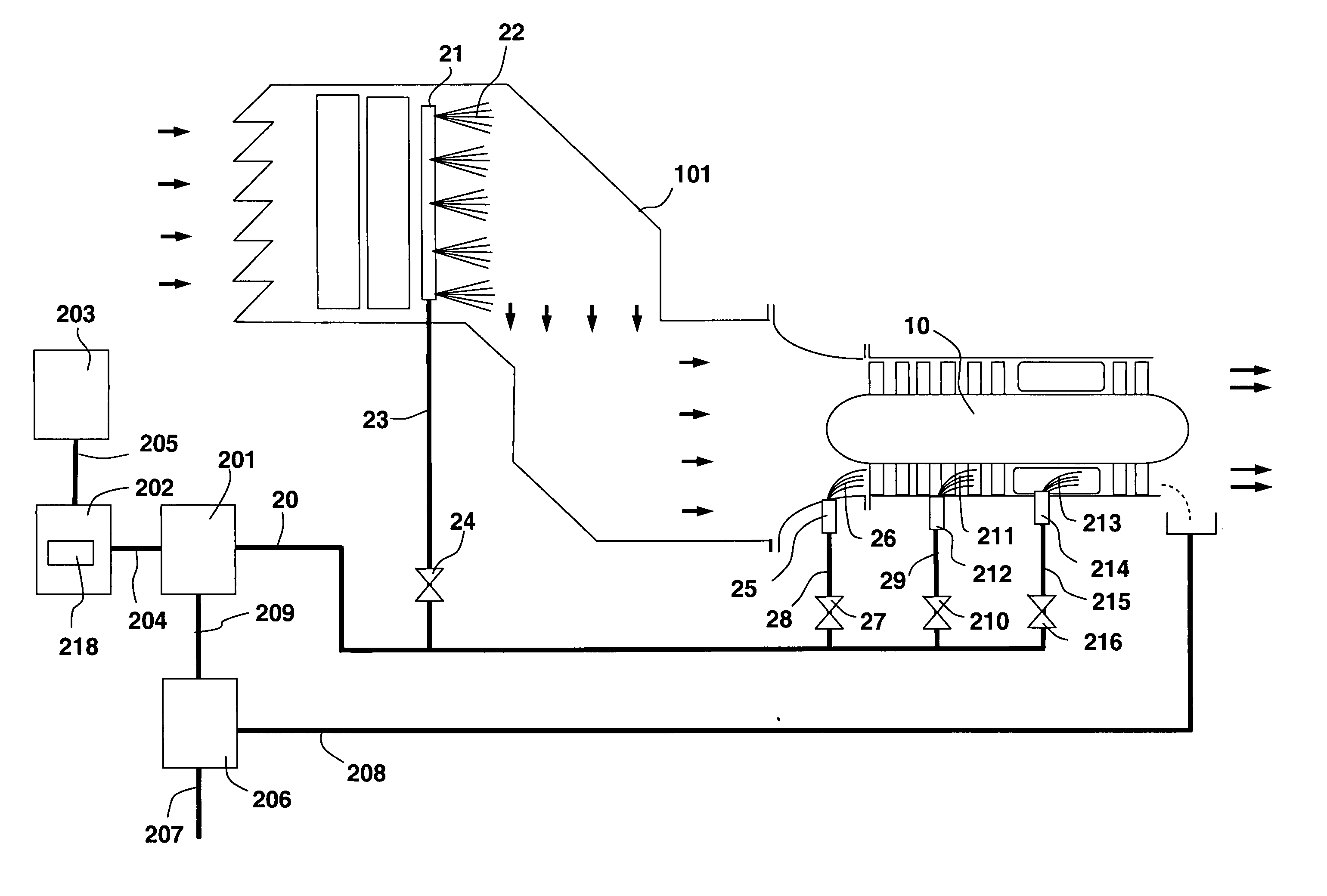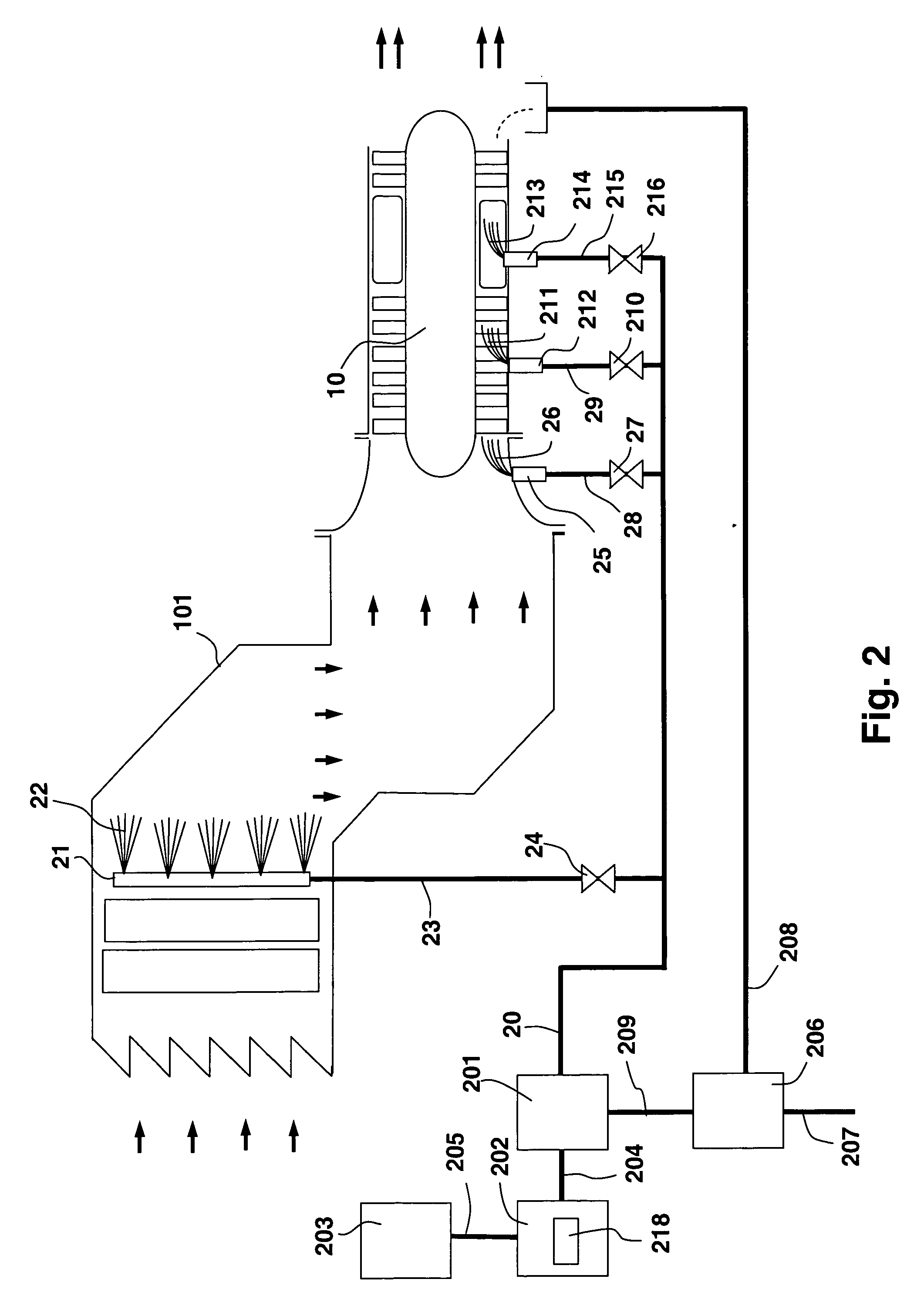System and method for augmenting power output from a gas turbine engine
a gas turbine and power output technology, applied in the direction of machines/engines, mechanical equipment, liquid cleaning, etc., can solve the problems of large air consumption of gas turbines, significant cooling of air, and the need for good control of engine air flow, so as to reduce the cost of operation, simplify the hardware, and reduce the effect of gas turbine consumption
- Summary
- Abstract
- Description
- Claims
- Application Information
AI Technical Summary
Benefits of technology
Problems solved by technology
Method used
Image
Examples
example 1
[0059] In this example the operator runs his gas turbine plant as a “power peaker”, i.e. the plant is in operation only limited hours a day for the purpose of supplying extra power when the grid demands it. The operator activates the evaporative cooling as to augment the power output. This is done by starting pump unit 201 and opening valve 24. The other valves on pipe header 20, i.e. valve 27, 210 and 216, are closed. In this mode of operation the evaporative spray cooling is running resulting in a fog upstream of the compressor. The fog will efficiently cool the air as the droplets evaporate. However, fogging has the disadvantage of coalescing airborne foreign particles which will appear as a wet and sticky fouling of the compressor. Now, it is a desire to wash that fouling away before shutting down so that the next run can start with a clean compressor. The operator accomplishes this by conducting a three minute on-line wash before shutting down. At three minutes before shutdown ...
example 2
[0060] This operator runs a gas turbine in power production and has both evaporative cooler and compressor intercooler installed. He has activated the evaporative cooling unit as to augment his power output. During the night the temperature drops. He is seeing that the air relative humidity is increasing as of the colder temperature. Eventually the dew point temperature will be reached in the morning where water no longer can evaporate. This disables him to use the evaporative cooler. To maintain his power augmentation capability he decides to switch to compressor intercooling. This is done by closing valve 24 and simultaneously open valve 210. When the sun rises in the morning and the temperature rises the relative humidity is lowered. He now decides to switches back to evaporative cooling by closing vale 210 and simultaneously open valve 23.
PUM
 Login to View More
Login to View More Abstract
Description
Claims
Application Information
 Login to View More
Login to View More - R&D
- Intellectual Property
- Life Sciences
- Materials
- Tech Scout
- Unparalleled Data Quality
- Higher Quality Content
- 60% Fewer Hallucinations
Browse by: Latest US Patents, China's latest patents, Technical Efficacy Thesaurus, Application Domain, Technology Topic, Popular Technical Reports.
© 2025 PatSnap. All rights reserved.Legal|Privacy policy|Modern Slavery Act Transparency Statement|Sitemap|About US| Contact US: help@patsnap.com



